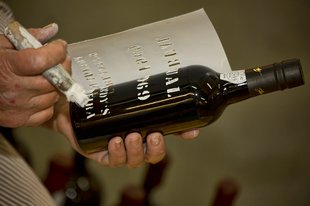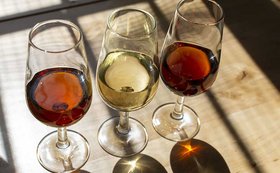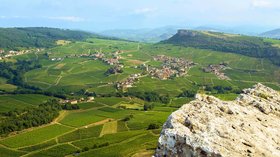Madeira Wine: How It’s Made, Styles, 10 Best Bottles (2025)
Imagine sipping a rare Madeira wine that’s just reached its peak after 150 years in the bottle!
This extraordinary wine has been a part of some of the greatest historical events - from Thomas Jefferson’s toast at the signing of the “Declaration of Independence” in 1776 to the presidential oath-taking ceremony of George Washington.
So, what’s so unique about Madeira wine? And, how is it different from Vermouth, Sherry, and other fortified wines? Which are the best bottles you should have in your cellar?
Come, let’s explore the fascinating history, winemaking techniques, wine styles, and taste of the Madeira wine. We’ll also show you the 10 best Madeira wines to invest in 2024, and a lucrative way to invest in wine.
Further reading
- Become a pro in Fine Wine Investing with this Ultimate Guide!
- What's better than a delicious white wine on a cozy night? Enjoy a glass of refreshing Pinot Grigio or an aromatic Reisling.
The Unique Madeira Wine
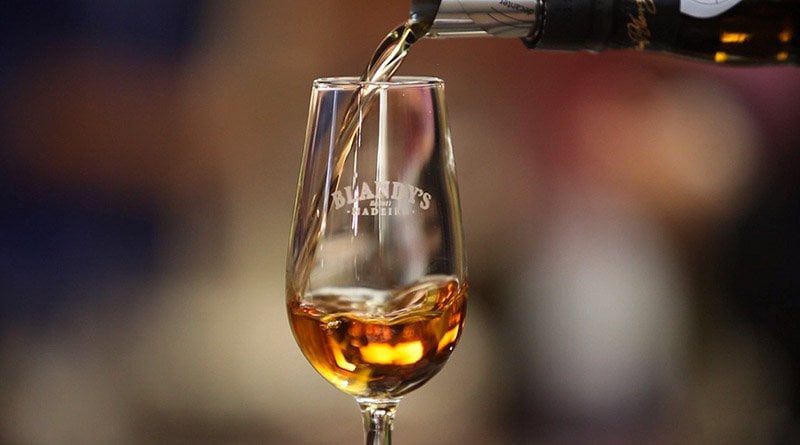
Madeira (not Maderia) is a fortified wine produced in the Portuguese Madeira Islands (Madeira and Porto Santo) off the coast of Morocco. What’s unique is that it’s aged under heat - through a process called Estufagem.
It is primarily made from five grape varieties:
- Tinta Negra Mole (Tinta Negra or Negra Mole)
- Sercial
- Verdelho
- Bual (Boal)
- Malvasia (Malmsey)
85% of the world’s Madeira is produced from the Negra Mole wine grape. That’s because Tinta Negra Mole can produce high yields without compromising the wine’s flavor.
Madeira wine has varying sweetness levels (from dry to sweet) and high acidity.
So, is it the same as Marsala?
Madeira wine is often confused with Marsala (an Italian fortified wine) because of their similar names, flavor profiles, and sweetness levels.
But, unlike Marsala, Madeira goes through forced oxidation, which is the process of exposing the wine to air after aging. That’s why an open bottle of Marsala only lasts a month while Madeira stays good for a year. (We’ll dive deeper into this in a while.)
But, first let’s find out more about the origins of this fascinating wine.
The Eventful History Of Madeira Wine
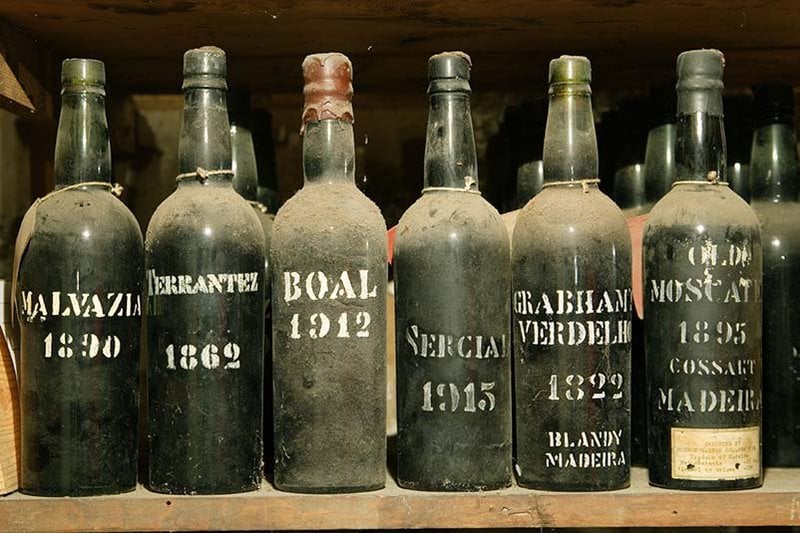
Madeira wine gained attention in the 15th century when ships traveling to the East Indies stopped at the Madeira Island. By the 16th century, this Portuguese island had a well-established wine industry.
At that time, Madeira was an unfortified wine and couldn’t handle long voyages. To counter this problem, the Madeira producers took inspiration from Port wine producers and started using distilled alcohol to stabilize their wines.
The Madeira winemakers then noticed that these fortified wines tasted deeper and better when they returned to the Portuguese island after long voyages. This, despite the range of hot and cold temperatures they journeyed through for months. A happy accident indeed!
These sea-aged wines that came back after a round-trip came to be known as Vinho da Roda.
To replicate this, the winemakers then started storing Madeira wine on trestles in special rooms called estufas, where the wine got heated naturally for a three-month period.
By the 18th century, Madeira was exported to the American colonies, Brazil, Britain, Russia, and South Africa.
But due to the powdery mildew and phylloxera epidemic of the 19th century, most of the island’s vineyards were uprooted. After the epidemic, the vineyards were replanted with American vines.
The Tinta Negra grape started being used as a workhorse grape variety.
Unfortunately, as shipping technology improved, ships no longer had to stop at Madeira - and the wine came to be known as “The Forgotten Island Wine.”
In 1988, the Symington family of Portugal invested in the Madeira Wine Company - a company co-owned by many Madeira producers. They relaunched Madeira and created a market for this fine wine in America.
By the end of the 20th century, the vineyard plots in the island were replanted with Sercial, Verdelho, Bual, and Malvasia grape varieties.
Today, Madeira is admired across the globe including France, Germany, Japan, the United Kingdom, and the US. In fact, the US has its own Madeira style called “Rainwater.”
Terroir of The Madeira Wine Region
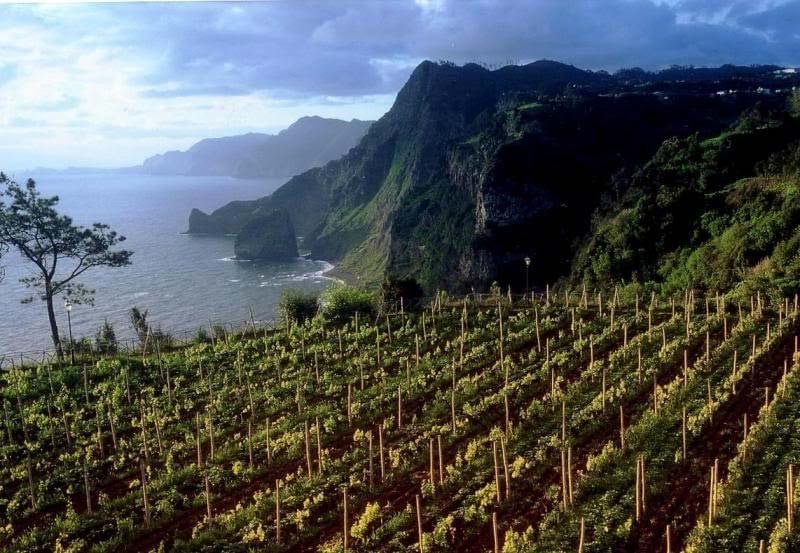
Madeira Island has an oceanic climate with high rainfall and a mean temperature of 66oF (19oC.) The island’s vineyards, planted on low trellises called Latada, have volcanic soils with red and brown basaltic bedrock.
The Madeira vineyard plots (located in Madeira and Porto Santo islands) are exposed to constant viticultural hazards like fungal grape diseases and botrytis rot.
The major white grape varieties include Malvasia, Bual, Verdelho, and Sercial. Common red grapes are Bastardo, Complexa, Negra Mole, and Moscatel.
According to the EU regulations, the wine is labeled after the grape that comprises 85% of the wine.
So, how are these grapes turned into delicious wine?
How Is Madeira Wine Made?

The grapes are pressed, and the juice is fermented in stainless steel tanks or oak casks. Sweet wine grapes are fermented with the skins, while dry wine grapes are fermented without the skins.
Depending on the grape variety, the winemaker performs fortification at different intervals during fermentation. The level of sweetness depends on when the winemaker stops the fermentation.
The wine is then aged using the Estufagem process. There are three main Estufagem methods - Cuba de Calor, Armazém de Calor, and the Canteiro method.
The most common Canteiro method creates high-quality Madeiras. The wine is stored in oak casks in special warm rooms (estufas) and is left to age naturally in the sun. This aging process lasts from 20 to 100 years for vintage wines.
Before bottling, the wine is exposed to the air to increase its longevity. This forced oxidation also gives it a tawny Port color.
Madeira Wine Styles

Madeira comes in various styles, thanks to the diverse grape varieties used in this Portuguese fortified wine.
A. Single Varietal Madeira Wine
- Sercial: This dry Madeira wine produced from the Sercial white grape has a distinct almond flavor.
- Verdelho: This varietal wine is admired for its smoky flavor and high acidity.
- Bual: A medium sweet Madeira, this wine has a rich texture and a raisin flavor.
- Malvasia: The Malvasia Madeira is a sweet wine with a distinct caramel flavor.
B. Blended Madeira Wine
Blended Madeira wines must have at least 85% of any of the four major white grape varieties - Sercial, Verdelho, Bual, and Malvasia. These white grapes are often blended with red grape varieties like the Tinta Negra grape.
- Reserve: Aged for a minimum of 5 years
- Special Reserve: Aged for a minimum of 10 years
- Extra Reserve: Aged for over 15 years
- Finest Madeira: (It doesn’t mean the finest style.) It is Madeira that’s aged for at least 3 years.
- Rainwater Madeira: Rainwater Madeira is a light wine made from the Negra Mole grape variety.
- Solera: Similar to Sherry, this wine is produced from a blend of different vintages.
- Table Wines: The island of Madeira also produces a range of table wines made from regional grape varieties like Tinta Negra Mole and Malvasia.
C. Other Rare Madeira Wine Styles
- Vintage or Frasqueira: This rare Madeira wine is aged in casks for 19 years and in a bottle for a year.
- Colheita Madeira: A vintage Madeira, Colheita Madeira is a rare wine aged for less than 20 years. Colheita is one of the most age-worthy Madeiras.
- Terrantez: It is a single varietal Madeira made from a rare wine grape, Terrantez.
Madeira wines that don’t carry a label are made from the Negra Mole grape.
Taste And Characteristics Of Madeira Wine

Madeira is usually medium-bodied with medium to low tannins, high acidity, and alcohol content.
Madeira wine can have varying sweetness levels: Seco (dry), Meio Seco (medium dry), Meio Doce (medium sweet), and Doce (sweet dessert wine).
The primary flavors of Madeira wine include caramel, walnut, hazelnut, dried fruit, coffee, and orange peel. A vintage Madeira will also have herb and spice flavors.
How to Serve Madeira Wine
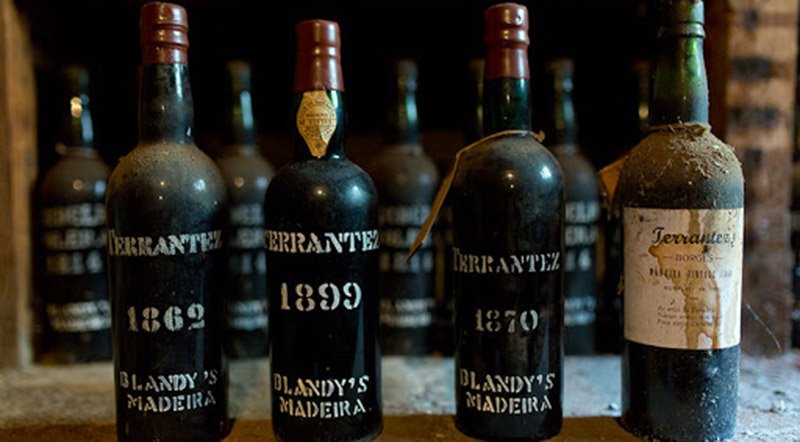
Serve dry Madeira at around 58oF (12oC-15oC) and sweet Madeira just slightly cooler than room temperature, in a white wine glass. Dessert wine should be served in a Port wine glass.
You can drink it as an aperitif or a digestif.
Dry Madeira is best served with sushi, smoked salmon, creamy soft cheese, or fruity desserts.
Sweet Madeira wine tastes excellent with blue cheeses, dried fruit, and dark chocolate desserts.
More With Madeira: Whip up Tasty Dishes and Cocktails Too!
Madeira adds flavor to everything it is added to.
A. Cooking With Madeira
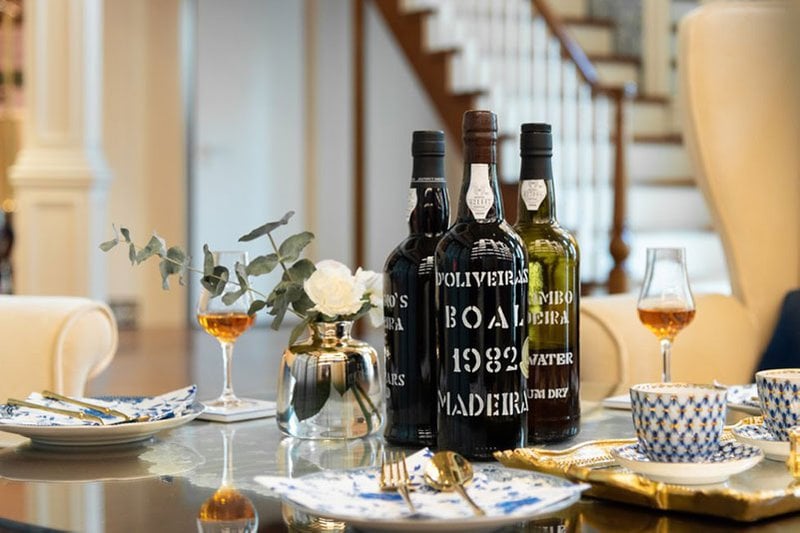
Madeira is a great cooking wine. You can use it for deglazing pans, reducing sauces, and salad dressings.
Saute mushrooms in Madeira to add a sweet earthiness to the dish - our favorite recipe.
Add chicken or vegetable stock, and you have the perfect Madeira sauce recipe.
Some brands you can use for cooking are Blandy, Justino, and Broadbent.
B. Madeira In Cocktails

Madeira makes a great cocktail additive - just like Vermouth and Sherry. Here are our favorite Madeira cocktails:
- Madeira Flip (Boston Flip): A blend of Madeira, sugar, and whole egg, this cocktail has a rich caramel flavor.
- A Cobbler: Replace the Sherry in a Sherry cobbler with Madeira, and you’ll have a refreshing drink with delicious smoky flavors. You can use a simple Tinta Negra Madeira for your cocktail.
Slurp! Can’t wait to buy a Madeira, right?
Here’s just what you need now:
10 Best Madeira Wines To Buy In 2024 (Including Tasting Notes, Prices)
Here are 10 awesome bottles from the stables of leading Madeira producers like Vinhos Barbeito and Blandy:
1. 1795 Barbeito Vintage Terrantez
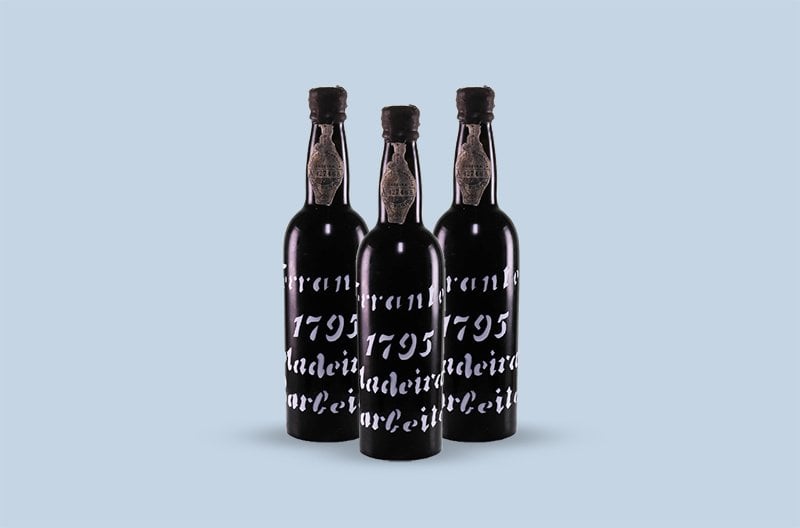
A delicious dessert wine, this Terrantez bottle by Vinhos Barbeito has a unique nutty flavor. The palate has a delicate sweetness with bright acidity.
Price of 1795 Barbeito Vintage Terrantez: $21,298
2. 1790 H.M Borges Terrantez 'T' Vintage
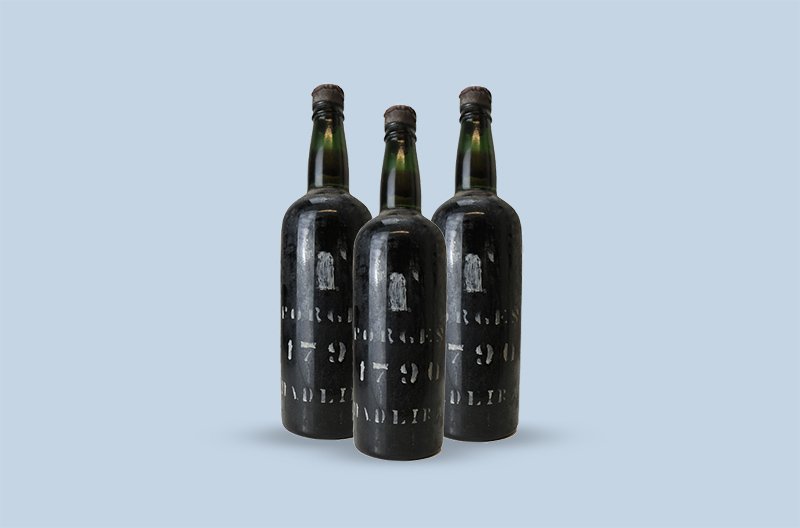
This 1790 vintage wine gives off a banana, peach, and sweet-dried-fruit aroma. The palate of this fortified wine is waxy with lingering acidity and a deep finish.
Price of 1790 H.M Borges Terrantez 'T' Vintage: $17,416
3. 1800 J. S. Terrantez

A pale amber Madeira wine, the 1800 J.S. Terratez gives off a pure orange blossom aroma. On the palate, you’ll notice a clean bitter-sweet finish.
Price of 1800 J. S. Terrantez: $16,698
4. 1748 Henriques & Henriques Verdelho Solera
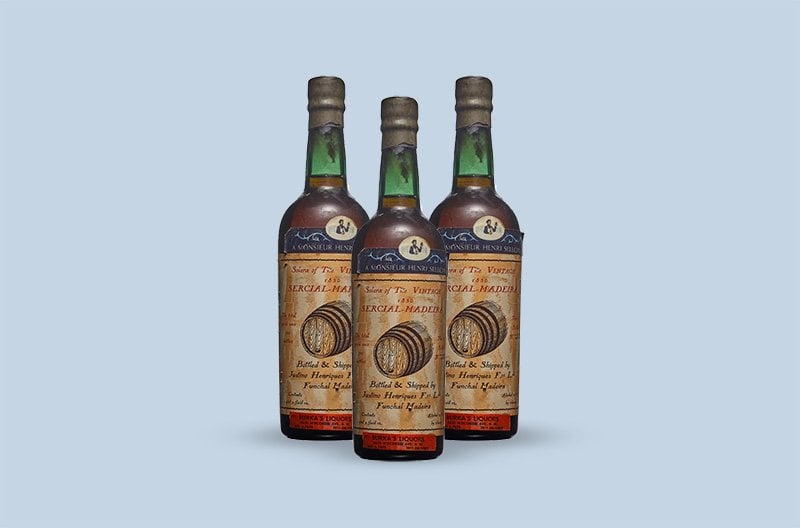
The 1748 Henriques & Henriques has a fresh, aromatic bouquet with apricot, spices, caramel, and roasted nut aromas. The elegant palate has a clear finish and nutty flavor.
Price of 1748 Henriques & Henriques Verdelho Solera: $10,155
5. NV Blandy's MCDXIX The Winemaker's Selection
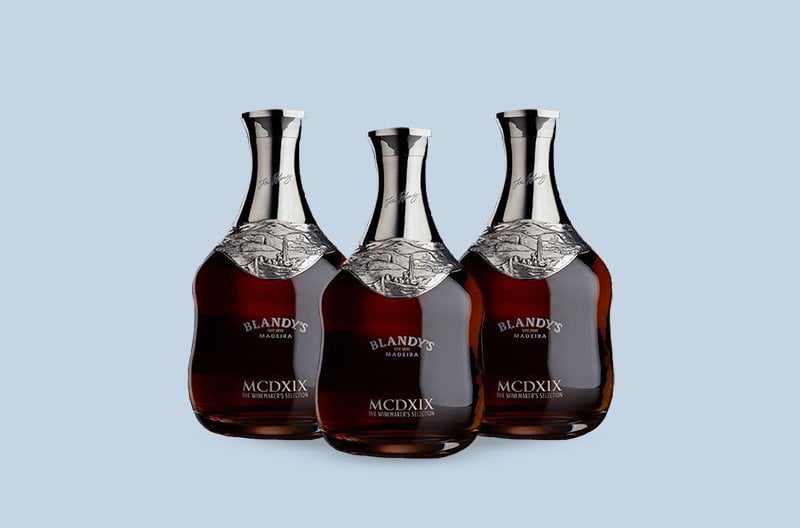
This non-vintage Madeira by Blandy has unique orange peel, clove, and mahogany aromas. The palate has a citric sharpness with saline and tangy finish.
Price of NV Blandy's MCDXIX The Winemaker's Selection: $3,006
6. 1893 Cossart Gordon Malmsey Vintage
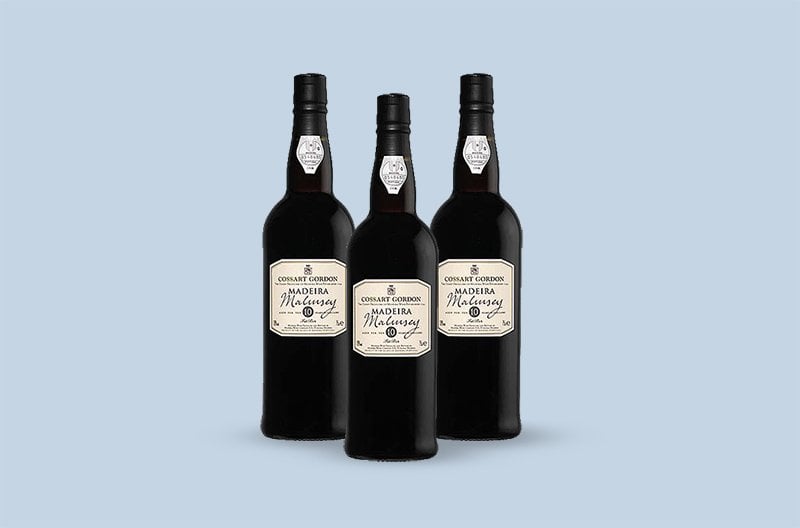
A magnificent fortified wine, this Malvasia vintage has an intensely fragrant nose with citrus aromas. The rich palate has tangy acidity and a lengthy finish.
Price of 1893 Cossart Gordon Malmsey Vintage: $2,999
7. Henriques & Henriques Founders Solera
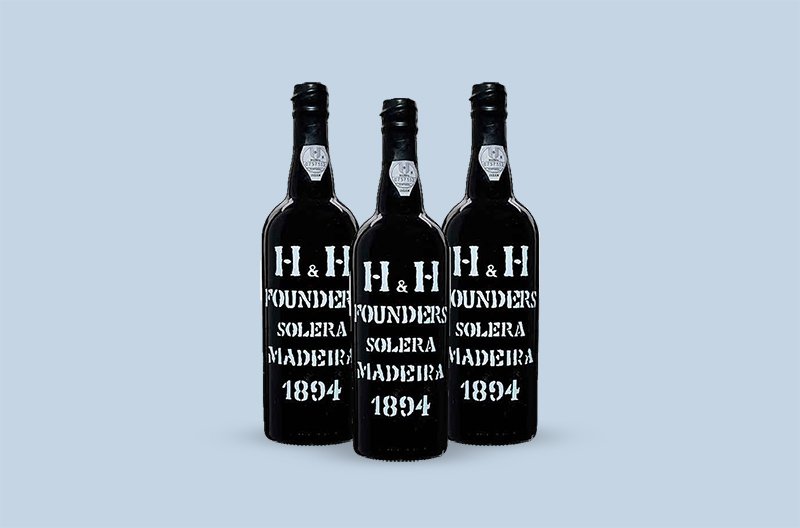
This non-vintage Madeira by Henriques & Henriques has a subtle spicy nose with a caramel aroma. Intense on the mouth, the wine has excellent length and fresh acidity.
Price of Henriques & Henriques Founders Solera: $1,430
8. 1845 Cossart Gordon Centenary Bual

This 1845 vintage wine is loved for its distinct sweetness. This sweet wine gives off aromas of singed rubber, caramel, coffee, chocolate, and molasses. The rich palate has a tangy acidity with a subtle bitter chocolate finish.
Price of 1845 Cossart Gordon Centenary Bual: $1,473
9. 1875 D'Oliveiras Moscatel Reserva Vintage
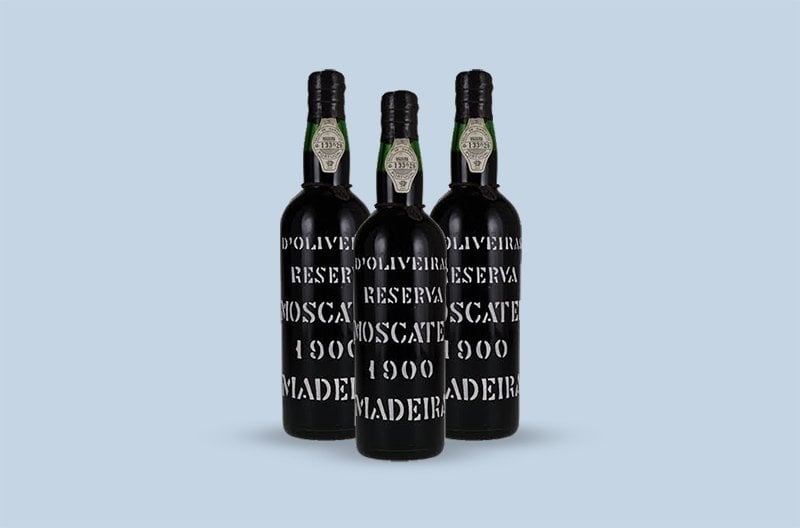
A deep amber Madeira wine, the 1875 D'Oliveiras Moscatel Reserva Vintage has a fruity flavor with concentrated acidity that swirls through the mouth.
Price of 1875 D'Oliveiras Moscatel Reserva Vintage: $1,537
10. 1860 Leacock's Sercial Solera
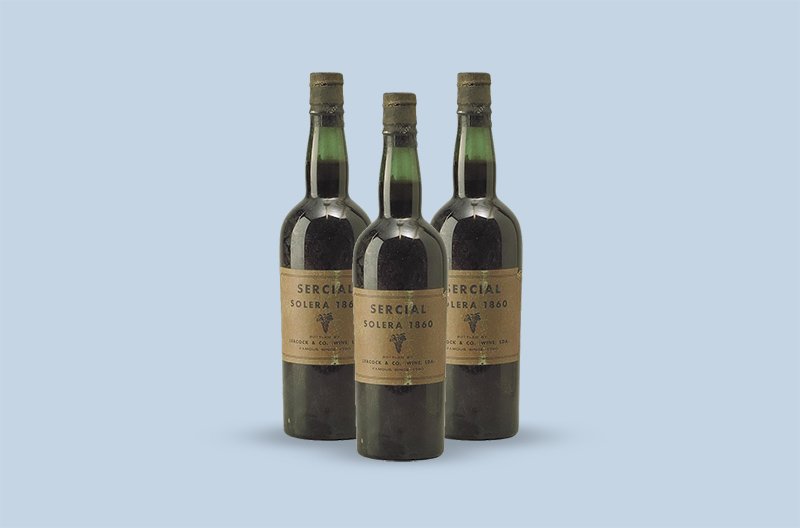
The 1860 Leacock’s Sercial Solera has layered aromas of resin, wafer, coffee, caramel, vinegar, and roasted nut. The creamy palate has balanced acidity with a robust texture.
Price of 1860 Leacock's Sercial Solera: $1,247
Now:
While they’re great for drinking, do they make profitable investments?
Should You Invest In Madeira Wine?

Cheaper Madeira wines are very common - you’ll find them in most supermarkets and wine stores. But, high quality single-vintages and Colheitas are rarer, and are what you should aim for if you’re looking for a long-term investment.
The exposure to high temperatures and forced oxidation makes these Madeira wines very stable and long-lived. A rare 100-200 year old, single-vintage Madeira could still have all the complexities and richness of a 20-year-old red Bordeaux.
The environmental, social, and political crises of the last two centuries meant a slowdown in Madeira production and a depleted number of old Madeira bottles. That’s why high-quality vintage Madeira that has survived from the 19th and 20th centuries is such a sought-after commodity today.
This scarcity, along with the rich flavor profiles, has catapulted the prices of some Madeira bottles.
You’ll have to shell out around $10,900 for the 1842 vintage of H.M Borges Terrantez 'T' Vintage - one of the most expensive fortified wines in the world. A 5 gallon ‘demijohn’ of 1846 Old Sercial Madeira - another great bottling - was sold for $39,200 at a 2018 Christie’s auction.
So, for a long-term investment, look beyond the supermarket shelves (which will usually stock only cooking Madeira.)
But how can you find a rare, investment-grade bottle for your portfolio? Also, how will you ensure the authenticity of your bottle?
Here’s a simple solution.
Invest In A Rare Madeira Or Any Other Fine Wine Through Vinovest

Vinovest is a leading online wine investment company that will help you buy, sell, and store authentic fine wines, and build an exotic wine collection from the comfort of your home.
How Does It Work?
To start building your wine collection, follow these four steps.
- Sign up on Vinovest
- Fill a quick questionnaire to share your risk appetite and investment preferences.
- Fund your account (minimum $1,000)
- Watch your collection grow in size and value!
Benefits
Here are some benefits that you get while investing through Vinovest.
1. Easy Buy And Sell
Vinovest’s AI-driven online platform helps you select, buy, and sell the right collectible wines with just a few clicks.
2. Best Prices
Vinovest sources your bottle directly from wineries, global wine auctions, and wine exchanges - ensuring that you get it at the best price.
3. Authenticity
Vinovest’s wine experts check the provenance of every bottle of wine you buy through them.
4. Optimal Storage
Don’t have a wine cellar?
Vinovest will store your bottle of fine wine in temperature-controlled warehouses that maintain the perfect light, humidity, and vibration levels.
5. Full-Coverage Insurance
Every bottle of wine you buy through Vinovest comes with a full-coverage insurance policy that covers theft, loss, and breakage.
6. Easy Delivery
If you want to try your delicious wine or find the right buyer for it, Vinovest will get it delivered to your (or your buyer’s) doorstep.
7. Tax Advantages
Vinovest stores your bottle of fine wine in bonded warehouses that don’t charge any excise duty or VAT.
8. Ownership
You have 100% rights to your bottle of authentic wine.
Add An Age-worthy Madeira To Your Wine Collection

Even as Madeira wines are reestablishing their stronghold in the international wine market, the scarcity of the best bottles has opened an excellent opportunity for wine investors.
If you’re a serious collector, then you must have a rare Madeira in your wine cellar.
Sign upwith Vinovest and get access to the finest Madeira and other fine wines today.
